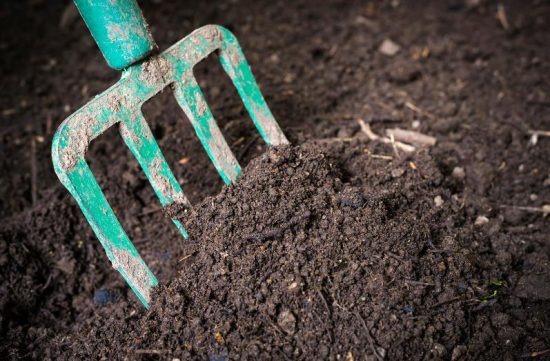In our continuous quest to live sustainably, various innovative solutions have emerged to help reduce our environmental footprint. Among these, the composting toilet presents a fascinating approach to traditional waste management by transforming human waste into usable compost. This system conserves water and recycles waste in an eco-friendly manner. By facilitating the conversion of waste into a valuable resource, these toilets offer an efficient and practical solution in the push towards greener living alternatives. Furthermore, their implementation can be crucial in remote or water-limited areas where traditional plumbing could be more helpful. Understanding how does a composting toilet work can enlighten those interested in alternative sanitation methods.
What is Composting?

Composting is a naturally occurring process in which organic matter breaks down into humus or nutrient-rich soil. Microorganisms that break down materials in under-regulated settings, such as fungi and bacteria, assist in this process. Waste, as well as carbon-rich materials like sawdust or coconut coir, goes through a similar decomposition process in a composting toilet.
Composting toilets promote aerobic decomposition, which is less odorous and more efficient than anaerobic processes. To keep the conditions right for this kind of decomposition, the compost material has to be stirred occasionally and have proper ventilation. This ensures the production of high-quality compost while accelerating the breakdown process.
Ultimately, the waste is converted into compost that can be used in agricultural applications, effectively closing the nutrient loop. This eco-friendly cycle significantly reduces the environmental impact of human waste and supports sustainable farming practices by returning valuable nutrients to the soil.
How Does a Composting Toilet Work and Benefits?
What is a composting toilet?
A composting toilet is a particular kind that does the biological process of composting to handle human waste. This process decomposes dry waste into humus, an earthy material, using little to no water and turning it into a beneficial byproduct.
Types of Composting Toilets
Self-Contained Units
Self-contained composting toilets are perfect for tiny homes, boats, and recreational vehicles because they are small and are made to handle all waste inside the container. Because these are stand-alone systems, installation, and maintenance are made easier because they don’t require external drainage or piping. These toilets usually collect and compost waste in a container under the toilet seat. Ventilation systems are essential in these units to guarantee adequate air circulation, support aerobic decomposition, and reduce odors. They also frequently have features like electric or manual mixing arms to help aerate compost and accelerate decomposition. Due to their self-sufficient nature and compact size, these units are well-liked by individuals who wish to lessen their environmental impact.
Central Systems
Greater complexity and more significant buildings or many families are the intended uses for central composting toilet systems. Under these systems, waste goes from one or more toilets to a central composting unit, usually outside the home. For standard settings like apartment complexes or commercial buildings, this centralized approach is more efficient and enables the management of more significant volumes of waste. To maintain enough air flow and odor control, central systems need more advanced ventilation systems and a network of pipes to transfer trash to the composting site. Larger, frequently mechanically assisted composting units that can manage the added weight and produce a more complete and rapid decomposition are installed in them. This type of system is ideal for situations where reducing water usage is crucial or where traditional sewage infrastructure could be more practical and present.
Why Are Chemicals Unnecessary in Composting Toilets?
Composting toilets operate chemical-free, which is one of their main advantages. They use natural processes instead of harsh chemicals, commonly used in standard toilets, to handle waste and odors. Because they don’t contain any chemicals, composting toilets are safer for the environment, human health, and the local ecology. These toilets contribute to preserving a more sustainable and healthy environment by depending on the natural breakdown of organic matter. Moreover, this technique reduces the possibility of contaminating groundwater and soil, improving the ecosystem’s sustainability.
How Does a Composting Toilet Work to Minimize Odors?

Contrary to popular belief, composting toilets emit little odor when adequately maintained. The aerobic decomposition process, which efficiently breaks down waste without producing the usual sewage smell associated with traditional sanitation systems, is the key to this odor control. Proper ventilation and the correct ratio of compost ingredients are essential to guarantee that gases are released and odors are eliminated. Because of this, composting toilets are an excellent choice for indoor installations, even in homes. Organic supplements like peat moss or coconut coir can help further with odor control, enhancing the effectiveness and appeal of the composting process.
What Makes Composting Toilets Ideal for Water Conservation?
The fact that composting toilets require little water is another crucial advantage. Conventional flush toilets, which frequently use tens of gallons of water per day per household, are responsible for a large portion of water use in homes. Composting toilets don’t need water, saving this essential resource. This feature is beneficial in places susceptible to droughts or where conserving water is a top priority. Composting toilets offer a viable alternative that aids in global water conservation initiatives by removing the requirement for water in the waste management process. It is also a cost-effective choice for users because the lowered water usage results in lower utility bills and less stress on municipal water systems.
Conclusion
As we delve deeper into sustainable living practices, the benefits of using composting toilets become increasingly apparent. It can provide a practical solution for waste management while conserving water and avoiding chemicals. The ability of composting toilets to operate odorlessly and transform waste into a beneficial byproduct underscores their potential in modern ecological practices. Considering these benefits, exploring the functionality and integration of a composting toilet can be worthwhile for anyone committed to reducing their environmental impact.
Using this technology can significantly support the objectives of sustainability and ecological resilience. Composting toilets is also evidence of creative, eco-friendly solutions that can contribute to a healthier planet as communities become more ecologically aware. Their adoption encourages a cycle of life that is in balance with the world’s natural processes and supports sustainable growth.
FAQs
How does a composting toilet work?
Composting toilets operate by decomposing waste using naturally occurring microorganisms and controlled conditions (like carbon addition and ventilation). The waste is mixed with sawdust or coconut coir to balance moisture and facilitate aerobic decomposition, minimizing odor and maximizing breakdown.
Do composting toilets smell bad?
When maintained correctly, composting toilets do not produce significant odors. Proper ventilation and aerobic decomposition help manage and often completely neutralize potential smells.
Are composting toilets sanitary?
Yes, composting toilets are sanitary when operated according to manufacturer guidelines. The composting process kills pathogens as the temperature in the compost chamber increases due to microbial activity.
Can I install a composting toilet in my home?
Many people install composting toilets in their homes, especially in areas inaccessible to plumbers or where water conservation is a priority. They suit all residences, including houses, cabins, and mobile homes.

